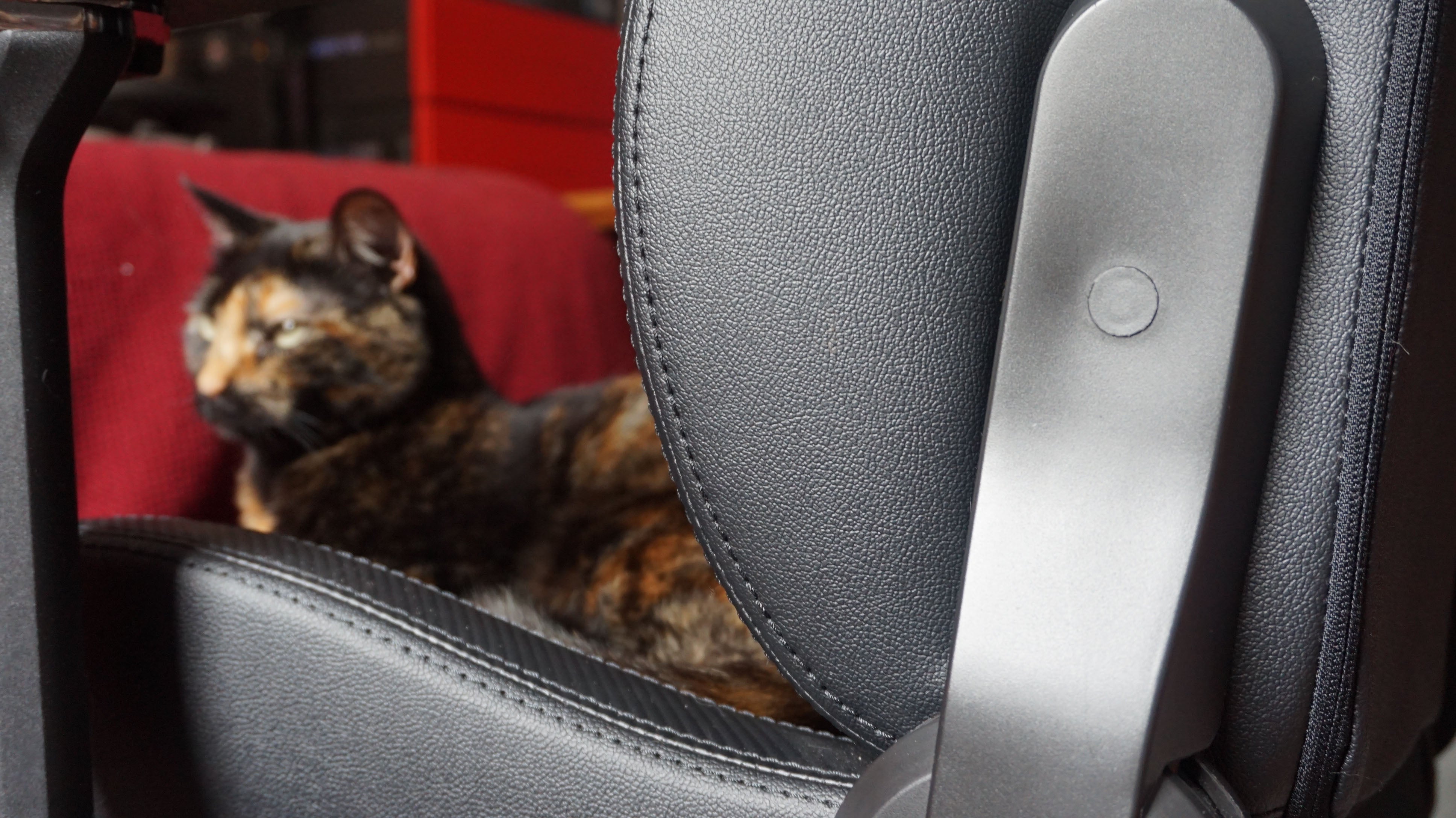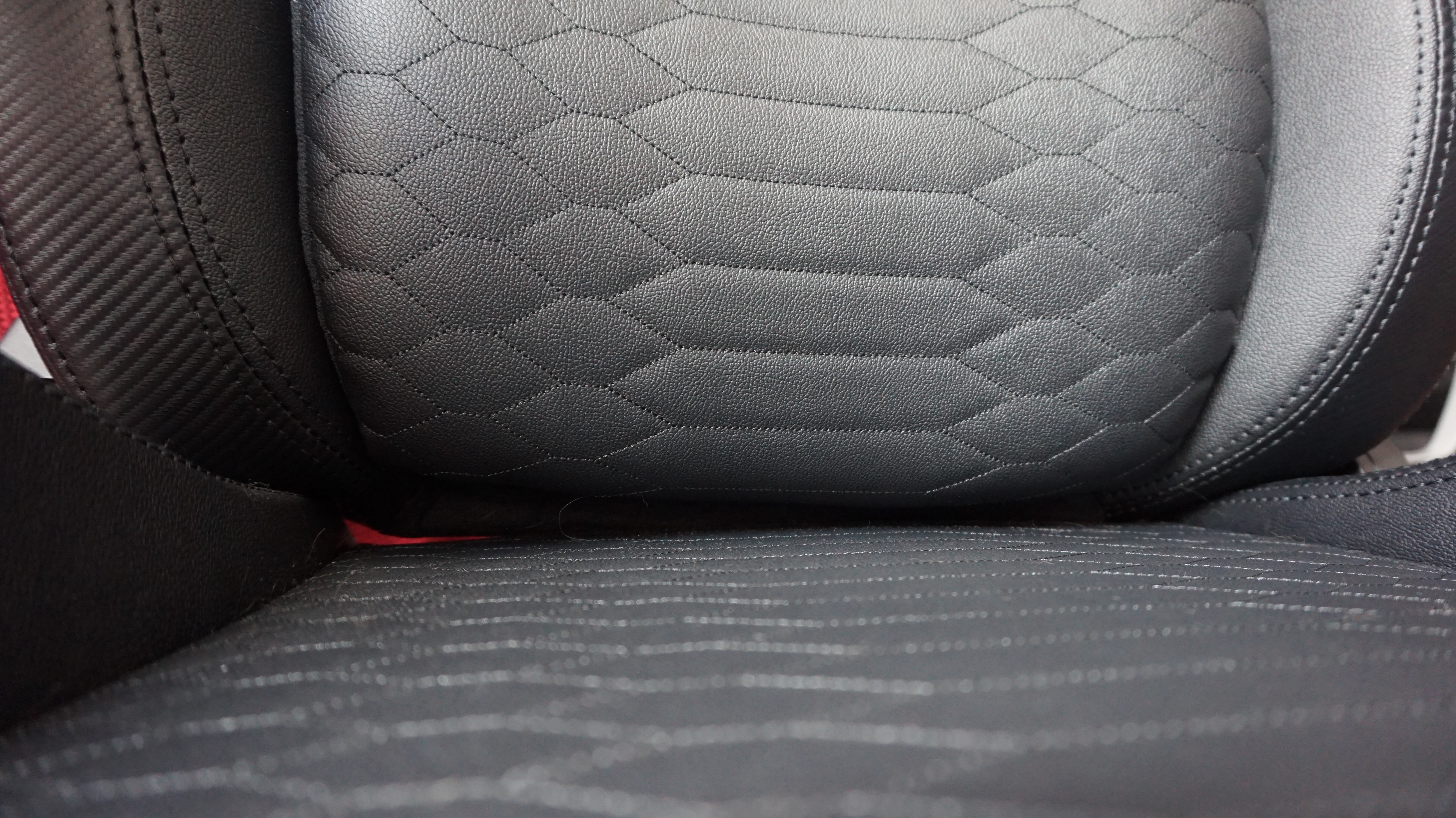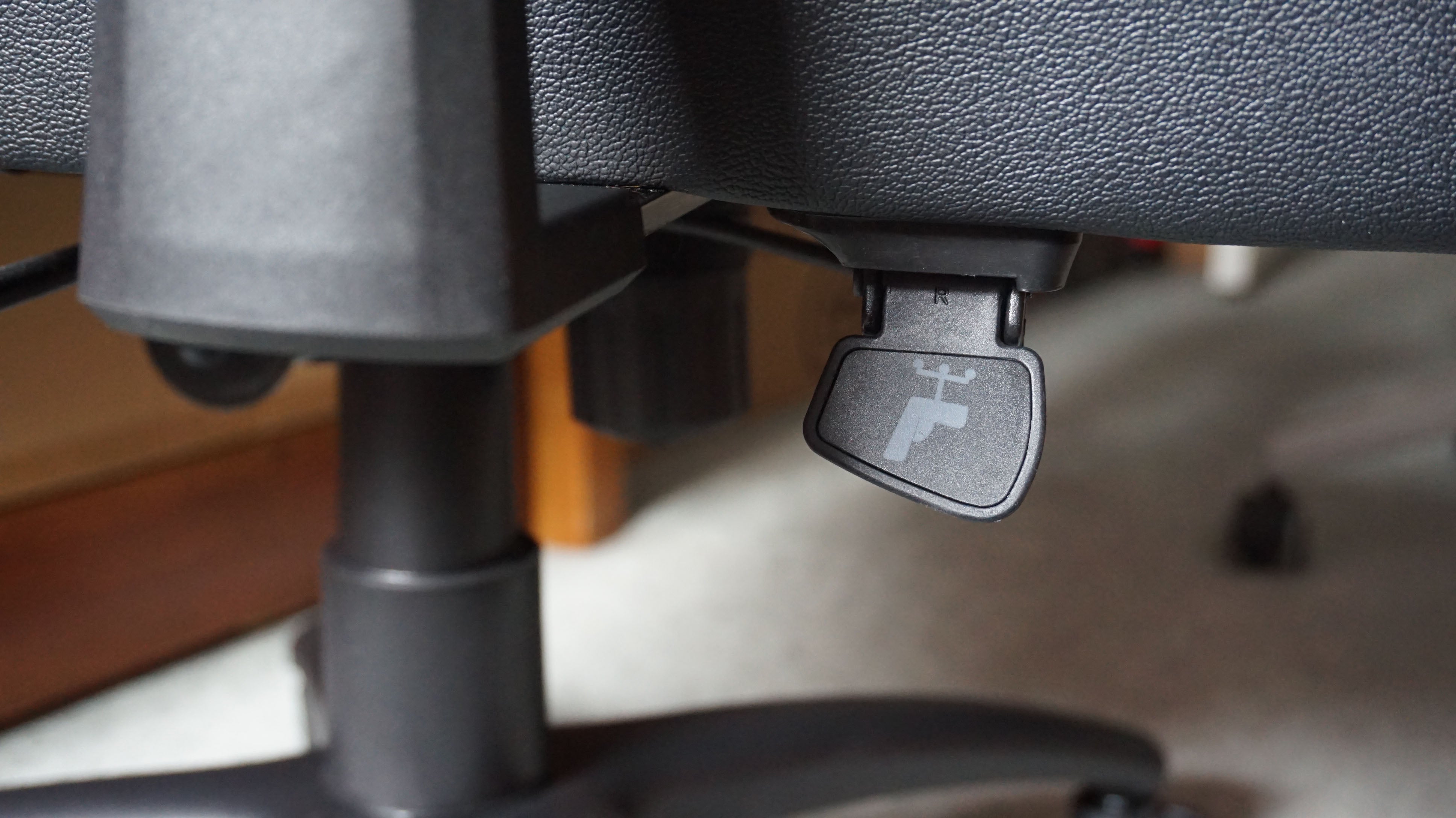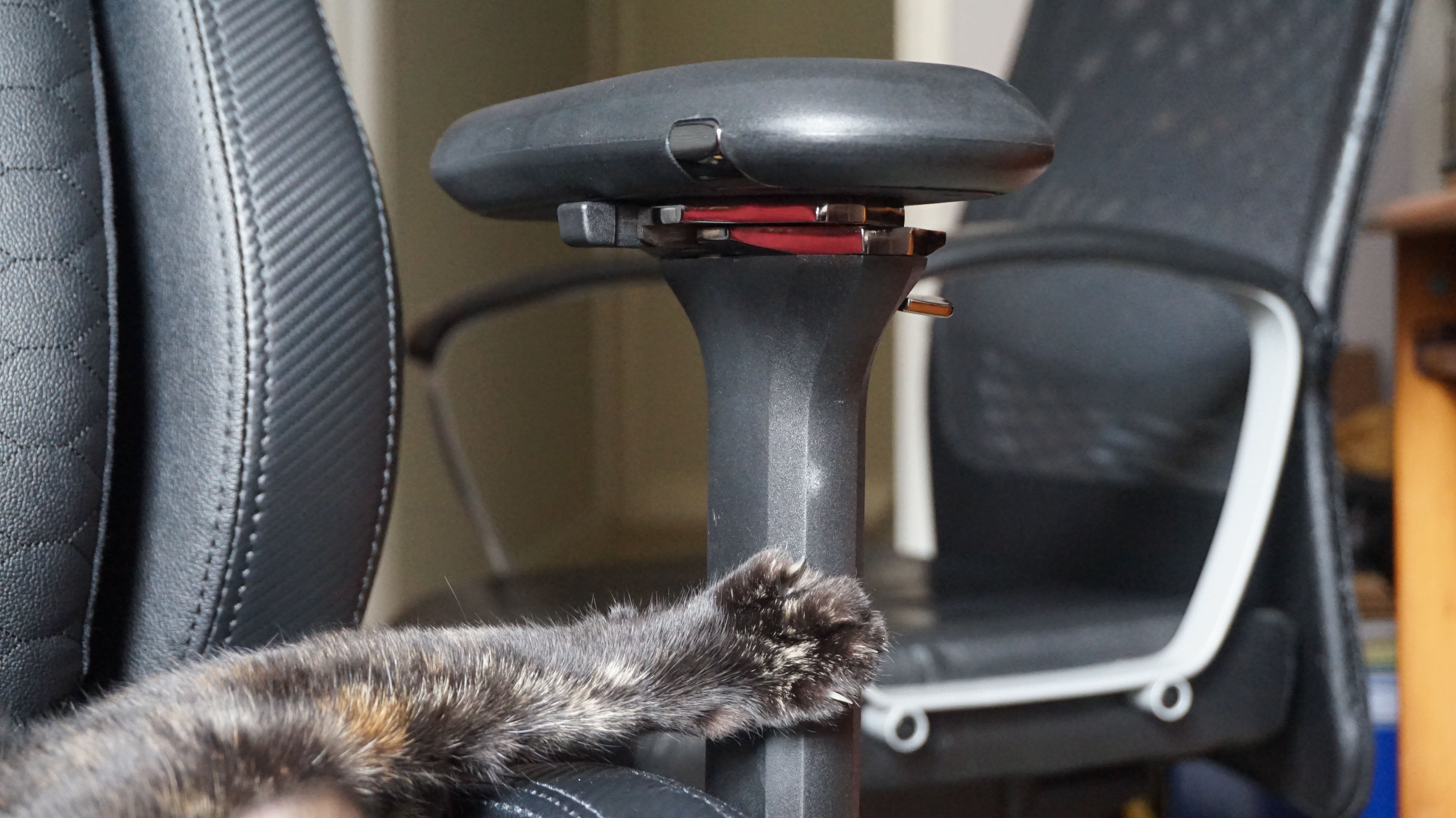The problem is that “proper” office chairs - your Herman Millers et al - are just so crazy expensive that the idea of paying close to a grand for one just seems outright preposterous. What kind of postural magic could it possibly cast to be worth that kind of money? So I thought Razer’s Iskur would be a good compromise. At £499 / $499, it’s half-way between your entry-level office chairs and your premium posterior palaces, and it’s also got proper built-in lumbar support (as any decent chair should) instead of a terrible pillow. Could this be the gaming chair of my dreams? Yes and no. Yes, because I’m pretty sure I’ve had slightly less back pain over the last three months, and its wider seat and height-adjustable 4D arms have meant I’ve also been hunching over my keyboard a lot less, too. Instead, I’ve been able to properly sit back in my chair, have my arms supported where I need them, and generally be a lot more comfortable. I’ve also (probably to the detriment of my spine) been able to sit cross-legged every now and again. The fixed position of my Ikea chair arms meant I wasn’t able to do this before now, and man alive how I’ve missed it. I don’t know whether that defeats the purpose of having a proper office chair or not, but good gravy, I’m a big crossed leg fan and I always feel slightly ill at ease when my chair prevents me from doing it. So those are all big pluses in my book. I also like that Razer have, in fact, created an all-black version in addition to their original black and green number. The black model still has a slightly unnecessary “By Gamers. For Gamers” logo stitched into the front of the seat, but at least its black lettering isn’t quite as obvious. I think I’d still do a small wince if I saw all that luminous green stitching staring back at me every day when I came into my office, so I’m glad there’s a sensible black version that wouldn’t be an immediate embarrassment when taking a video call. The big problem I have with the Iskur chair is that I’m pretty sure it was not designed for a woman of my height and build. Or women full stop, while we’re at it. According to Razer, the Iskur can support a max weight of up to 136kg / 21 stone (not a problem), and its ideal height of gamer is somewhere between 5ft 6in and 6ft 2in (that’s 170-190cm). I’m right at the lower end of that height scale, but (and I can’t really believe I’m saying this) I don’t think I’m actually heavy enough for it. Now, I’ve put on my fair share of lockdown pounds over the last year, and if my current BMI is anything to go by, I’m actually verging on being overweight for my height. I’m no skinny slip of a thing. But whenever I wanted to tilt the chair back to accommodate my cat’s daily body assaults (she insists on sitting right on my tummy like a big furry baby every single day), I was only able to do so by pushing right back on my tiptoes rather than simply, you know, doing a normal lean. At first, I thought I was pushing the whole chair off the floor, but then I realised the chair was far too heavy to be rocked like that. I was, in fact, tilting it, but I really had to work at it. I had to keep pushing to keep myself tilted back, too, otherwise the chair would go straight back to its usual position. It’s not a great chair for relaxing in (or for full frontal cat sits), and it was the one thing I really missed from my Ikea office. It’s possible the Iskur was designed to be like this. It’s also possible I screwed it too tightly together during assembly. I would love to take it apart and try again, but my second big problem with the Iskur is that it’s kinda impossible to do that now. In order to hide those unsightly screws, Razer provide two little plastic caps that pop into the screw wells. And man alive, I have not been able to pop them back out again since putting it together for love nor money. Those little caps are flush with their plastic surrounding, and I fear the only way of prying them off again would end up seriously wrecking the rest of the surround. It’s a shame, as I also ended up messing up the actual alignment of the back of the chair as well. This is what happens when you try and assemble a whacking great chair like this on your own - which was pretty easy for the most part, but would definitely benefit from having a second person around to hold things in place while you used its bundled allen key. Look closely and you’ll see there’s a little gap where the seat joins the back on my chair - and I can’t make it straight again because of those damn plastic caps. It’s not like my spine feels permanently out of alignment as a result. If anything, I can’t say I’ve noticed it at all. But there’s something about knowing it’s not straight that irks me. If I’m being honest, the 4D arms also feel like they go in enough for me, either. Since they’re 4D, they can go up and down, in and out and even tilt in at an angle thanks to three separate push-in buttons. And they’re just right for having one hand on the WASD keys and one hand on my mouse. But I always felt the urge to pull the right one in even further when I was just typing. Once again, I felt too small for the inner limits of the chair, which ended up being a pervading theme with a lot of its other special features. The bundled head pillow, for example, is similarly a bit too plush and / or big for someone of my height. Razer’s fancy diagrams have it pictured as nestling into the curve of your neck, but for me it comes up closer to the bottom of my head, pushing my skull too far forward to be completely comfortable. Luckily, it’s removable, so I can leave it to one side and let my cats have at it instead, but it’s disappointing all the same. It is so very soft and nice. I also didn’t feel a huge need to use arguably the Iskur’s defining feature - its customisable lumbar support. Thanks to a little lever switch underneath the chair on the right hand side, you can have the curvy lumbar panel flip outwards for when you want to sit further forwards. You can pop it anywhere you like - its position isn’t fixed - but I often found that its default position (i.e: fully back) was more comfortable when working. In truth, this is probably where the head pillow is really meant to come into play, as the extra support on your neck would probably be ideal for when you’re sitting further forward like this. For someone of my stature, though, the combination of sitting further forward and having the head cushion pushing against my head rather than my neck often meant it felt like the rest of my spine was slumping back in the middle. Maybe it’s just my bad posture, but I also have a strong feeling that, if I was just a couple of inches taller, this would be brilliant. When I really sit up straight, I can just about glimpse what it would be like. But more often than not, I slump back down again, and my shoulder blades sink into the gap where there’s no support. That said, I will almost certainly carry on using the Iskur, as fundamentally I do think it’s a better chair than my now very scratched and rather worn looking Ikea one. The Iskur’s leather surround will no doubt end up looking much the same in another three months I suspect - the few cat claw attacks it has suffered over the last three months have already left quite a few unsightly pock marks - but at least my back and shoulders will have better support in the meantime. If I were taller and larger, I’d probably be even more certain of the Iskur’s respective benefits. As it stands, though, I do still have a small yearning for a Herman Miller one day, if only so I didn’t feel like such a relative short arse compared to your average gamer man. In the meantime, though, the Iskur will do just fine.




